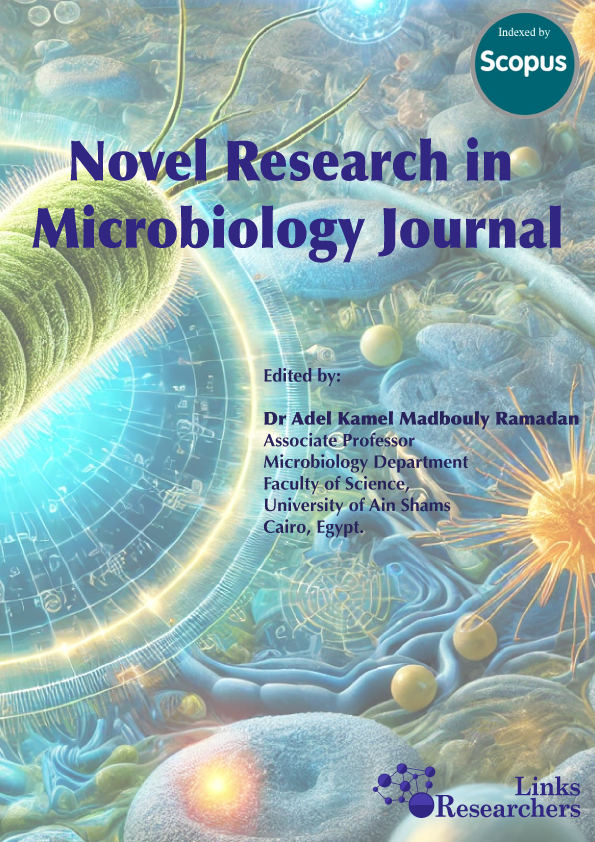Detection of possible aminoglycosides resistance mechanisms in Pseudomonas aeruginosa resistant isolates
Novel Research in Microbiology Journal (2024), 8(4): 2526-2541
Detection of possible aminoglycosides resistance mechanisms in Pseudomonas aeruginosa resistant isolates
Maria R. Boushra1*; Noha A. Hassuna2; Gamal F.M. Gad1; Reham A. Ibrahem1; Nancy G.F.M. Waly1
ABSTRACT
Globally, there is a growing concern about Pseudomonas aeruginosa resistance to aminoglycosides. Enzymatic modification of these drugs is the predominant resistance mechanism. Additionally, P. aeruginosa possesses many efflux systems that enable it to resist a variety of antimicrobial agents. This study aimed to determine the resistance patterns to several antibiotics as well as the possible mechanisms of aminoglycosides resistance, including aminoglycosides modifying enzymes (AMEs), genes, and active efflux system, observed in clinical P. aeruginosa isolates recovered from patients admitted to Minia University Hospitals, Minia, Egypt. Isolates of P. aeruginosa were identified by traditional phenotypic tests and assessed for their in vitro susceptibility to various antibiotics. The minimum inhibitory concentrations (MICs) of some aminoglycosides were determined without and after the addition of carbonyl cyanide m-chlorophenylhydrazone (CCCP). Aminoglycoside resistance amplified gene sequences were detected using polymerase chain reaction (PCR). Antibiotic sensitivity testing was applied on 93 clinical isolates of P. aeruginosa. The highest rate of resistance was recorded against cefepime and ceftazidime (94.6 % each), while 35.5 % of the examined strains exhibited resistance to minimally one of the evaluated aminoglycoside antibiotics. Furthermore, 49.5 % of isolates were multidrug- resistant (MDR). After CCCP addition, 24.2 % of the resistant isolates restored their sensitivity to gentamicin. According to PCR analysis, aac(3)-II was the most frequently detected gene (21.2 %) followed by aph(3′)-VI (15.2 %), and aac(6’)-IIa (3 %). Multiple drug resistance was observed among P. aeruginosa strains included in this study. Resistance of P. aeruginosa to aminoglycosides is greatly influenced by efflux pumps. Coordinated measures and further investigations are urgently needed to manage aminoglycosides resistance.
To share on other social networks, click on any share button. What are these?






